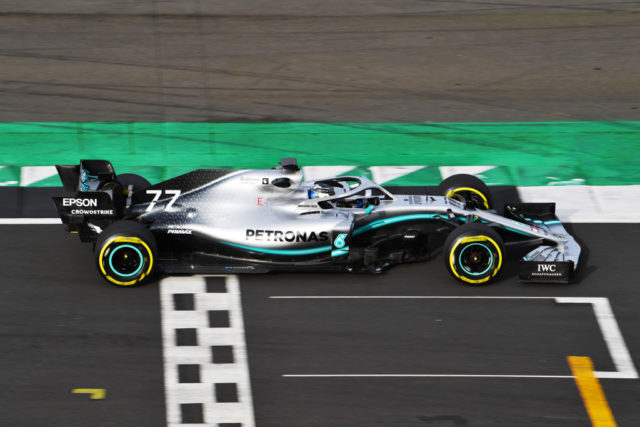While regulatory changes influenced partly Mercedes chassis development was partly, the Power Unit regulations remained largely stable. That made the development work more of an evolutionary process in which the team worked hard to achieve two main goals – improving performance and reliability.
“We’ve made changes to the cooling architecture of the Power Unit, which hopefully provide aerodynamic benefit on the car and also provide efficiency benefit on the Power Unit. So, hopefully, a win on both the chassis and on the Power Unit,” said Andy Cowell, Managing Director of Mercedes-AMG High Performance Powertrains. “Right at the heart of the Power Unit is the conversion of fuel into heat release in the combustion chamber and useful work out of the crankshaft. We have made steps on the combustion efficiency and on the ERS system. The marriage between the turbocharger assembly with the MGU-H, the inverter, the cells and the MGU-K: that whole system is now capable of operating more efficiently and helping with energy deployment through a race.”
Mercedes‘ title partner PETRONAS played an important role in the hunt for improved performance and reliability
That is especially important in the development of the new Power Unit.
“The fuel is right at the heart of the combustion. Making sure that the chemical composition and the thermodynamic architecture of the Power Unit are working together exceptionally well is key to thermal efficiency,” said Andy.
Cowell also explained that PETRONAS have continued to work well with Mercedes’ thermodynamic engineers. Its engineers know exactly how the engine works. Meanwhile, Brakley’s Power Unit engineers know exactly how the fuel works.
“We’ve run many candidates on the single cylinder and on the V6 engine to derive a new fuel for 2019. It’s a very tight-knit group. PETRONAS also provide the lubricants for our car which play two roles: to make sure that components don’t contact, it’s key that there is an oil film between highly loaded components both for reliability and for friction reduction. If you can keep components apart the friction is lower, and the wear is lower. But the lubricant also provides cooling within the engine. It’s a critical element of the engine. It’s the lifeblood of the engine for its survival.”
The maximum race fuel allowance has increased by 5 kilograms to a total of 110 kilograms
However, the higher fuel allowance does not impact the thermal efficiency of Formula One Power Units.
“If you have got an efficient engine with efficient aerodynamics and you are prepared to do a little bit of lift and coasting, then you have the opportunity to start the race at less than 110kg,” explained Andy. “For every 5kg of weight you save, it’s about two-tenths of a second a lap quicker. So there is a natural reward to starting the race a little bit lighter. There is still a competitive edge from making an efficient car – both Power Unit and aerodynamics – and racing smartly to make sure that you have good pace at the start of the race as well as through the race.”
First laps in the bag ? W10 looking right at home on track! #WelcomeW10 ✨✨✨ pic.twitter.com/M41Ns0oTHe
— Mercedes-AMG F1 (@MercedesAMGF1) February 13, 2019
































